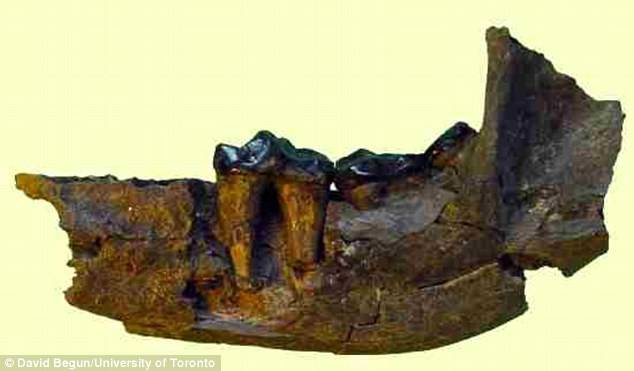The new discovery raises questions about the origin of the species.

DailyMailThe jawbone found by researchers suggests pandas originated in Europe
Though it’s China’s official national animal, the giant panda may have actually originated in Eastern Europe.
A team of researchers has discovered a 10-million-year-old jawbone of an ancient mammal while on an archeological dig site in northern Hungary.
Based on the shape, size, and structure of the teeth, they believe that the jawbone belongs to the ancestor to the modern day giant panda, which was previously believed to be confined to China.
“There are interesting similarities between animal fossils found in some European and Chinese sites in the late Miocene period, suggesting that there may have been a lot of traveling between the two areas,” said scientist Dave Begun, the professor from the University of Toronto who made the discovery.
The find also revealed new insight into how the panda evolved.
The modern day panda survives solely on a diet of bamboo, an anomaly for a mammal with the digestive system of a carnivore. However, the jawbone suggests that ancient pandas may have had a more diverse diet.
The shape of the teeth differs slightly from modern pandas, suggesting that pandas did not become dependent on bamboo until they arrived in China.
Until the find, the oldest known giant panda fossil — found in China — was eight million years old. That leaves two million years for pandas to have migrated to Asia.

DailyMailUpper half of the jawbone found in Hungary

Researchers know that many ape species migrated from the northern Hungarian region, where the panda jaw was found, to northern Asia. Studying those migration patterns could help researchers uncover the way that pandas might have found their way there as well.
Though researchers can not definitively say which came first — Europe or Asia — there is evidence that suggests that pandas originated in Europe.
The chemical makeup of the area where the jawbone was found indicates that the area used to be a lush subtropical forest, near to a lake, the perfect climate for a giant panda. However, about five million years ago, the climate shifted.
“The environment cooled and dried out,” says Louis de Bonis, a researcher at the University of Poitiers in France. “There was a change in the faunas in Europe, and the species linked to dense warm forest disappeared.”
China was most likely the closest and most accommodating climate for the pandas to travel to. Currently, the giant panda lives only in the western forested mountain ranges of China.
Next, check out these amazing panda facts. Then, read about the oldest human fossils ever found.





